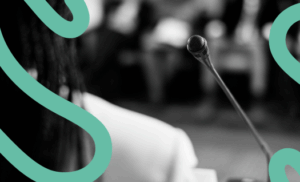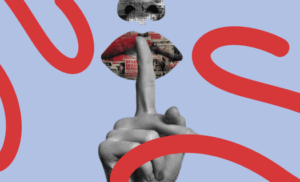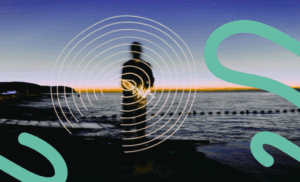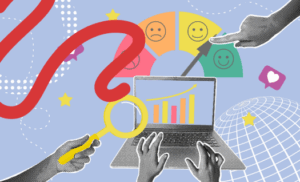With just a few days left in a very productive, challenging, and distinctive year in many respects, we asked our director, Carlos Molina, to share with us, based on his vision, expertise, and sixth sense, the four marketing and communication trends he believes will be very prominent in 2023. We added another variation to this question; we asked her, if she had the opportunity, what trend from the past she would bring back to apply today. And this is what he told us.
1. The consolidation of content creators
The rise of graphic social platforms (TikTok, Instagram, Snapchat, BeReal, etc.) is leading to the polarization of users into two profiles: either you create content or you consume content. In these environments, creating content is much more difficult than it was on networks such as Facebook or Twitter. The first one didn’t add pressure because most of our contacts were friends and family, and even though it was public, it didn’t reward originality, but rather personal connections.
On Twitter, the public exposure is greater, but text content in the form of reflection, information or jokes is rewarded. But TikTok, for example, requires a lot more: visual skills, video editing, defining short scripts, recurring video production… It’s a lot of effort to achieve success and visibility and to stay there. That’s why I think we will see a process of consolidation: many creators will “disappear” as such after a short period of success, because only a few will be able to focus and dedicate themselves to this activity with the expectation of generating income. In the same vein, we will be less and less involved and more and more passive.
2. Post-pandemic rebalancing
With the coronavirus, we saw activity on certain platforms and media skyrocket. There was more time to consume content and even to produce it. The last three years, however, have been a scenario that is returning to a different normality. Some of the growth experienced will be followed by a decline in content consumption figures as certain activities that require face-to-face presence recover to some extent.
“The growth experienced will be followed by a decline in content consumption figures as certain activities that require physical presence recover.”
Thus, platforms that have staked everything on this super growth and have made calculations based on the assumption that the dynamic would continue along the same lines will have to revise their figures and find alternative ways to stabilize themselves. This will happen on many levels. In the case of social media, Twitch could experience a slowdown, but this could also happen with cloud-based office tools if, as expected, the speed of adoption of the latter cannot be maintained in a scenario where physical presence once again becomes an important variable.
3. The Age of Sociopaths
This may sound exaggerated, but as a result of the rapid digitization of personal relationships (video conferencing, access to social platforms, the incorporation of new network users after the pandemic, etc.), the true social fabric in which we live is becoming increasingly visible. There is a user profile that has found an ideal breeding ground in social media and gets what it needs most in these environments. These are sociopaths, people who lack empathy for others, who cannot correctly discern right from wrong, and who seek, above all else, recognition and attention for themselves.
Often, in fact, they create their own rules and have no filter when interacting with other people. They are the perfect trolls and, in many cases, dangerous because they present themselves as influencers even though they are not role models. Now that there is so much talk about polarization, we can identify many sociopaths behind movements, initiatives, and cancelation actions in digital media. Before the coronavirus, many had already become visible. Now, those who had not experimented with social media have had the opportunity to do so… and they like it, because it satisfies their need for attention and visibility. And what do the rest of the users do? In many cases, they praise, applaud, and recognize the behavior of these types of profiles, which are seen as daring, original, non-ideological, courageous, and even innovative.
Is Elon Musk a sociopath? Quién sabe, pero su forma de polarizar o de provocar a los demás puede ser el germen para hundir la confianza en determinados entornos de conversación e información que ya venían muy tocados desde el impulso a las fake news en la última década.
4. Artificial intelligence or digital brother-in-law
Although we have heard the concept of artificial intelligence (AI) many times before, we now have the opportunity to hold conversations with more advanced tools and intelligences. Natural Language Processing (NLP) has been one of the areas of AI where the most work has been done to ensure its optimization. The most advanced model currently available is GPT-3, which operates with more than 175 billion parameters and will soon be replaced by its next version, GPT-4, which will include more than 100 trillion parameters.
Since November 2022, we have been able to experiment with ChatGPT, a system based on GPT-3, developed by the company OpenAI, which I will tell you much more about here in the direct marketing column. But from our experience at the agency and our perspective, it is a tool that is undoubtedly learning and improving, although for now it behaves more like a digital brother-in-law, who always has an answer even if it is not necessarily correct. It is possible that the next step will be taken by Google, transforming its search engine to use a similar interface and completely transforming what, until now, were SERP results. In that case, we could ask it to write a white paper for us, and it would do so without missing a single quote, a single piece of data, or a single link.
ChatGPT behaves more like a digital brother-in-law, who always has an answer even if it is not necessarily correct.
What is clear is that, in 2023, we will see how we move from a phase of experimentation and testing to seeing this technology in real applications or results. We would not be surprised if, at some point, we can ask Canva to design an infographic for us with the specific information we provide.
5. Bringing back a trend: informative content as added value for products and services
Several years ago, most media outlets activated different payment models to monetize their activity: total or partial paywalls, subscriptions with early access to content, proprietary or sector-specific content distribution platforms (Kiosko y Más, for example), etc. The process accelerated in 2020, not so much because of the pandemic but rather because these measures had been approved some time ago and it was urgent to implement them.
At the time, some of us suggested that cross-selling could help make media activities more profitable, but in a manner opposite to how newspapers had operated years earlier. Instead of giving away collectible products with print editions, it made sense for digital media subscriptions to be included with the purchase of other products or services. For example, with a subscription to a streaming platform or with the purchase of a pair of sneakers. Why not? It hasn’t happened yet, but it’s a path that could be reopened, because the media continues to look for ways to expand its reach without losing revenue and relying entirely on advertising.
If we don’t read each other before then, we wish you a happy 2023.










